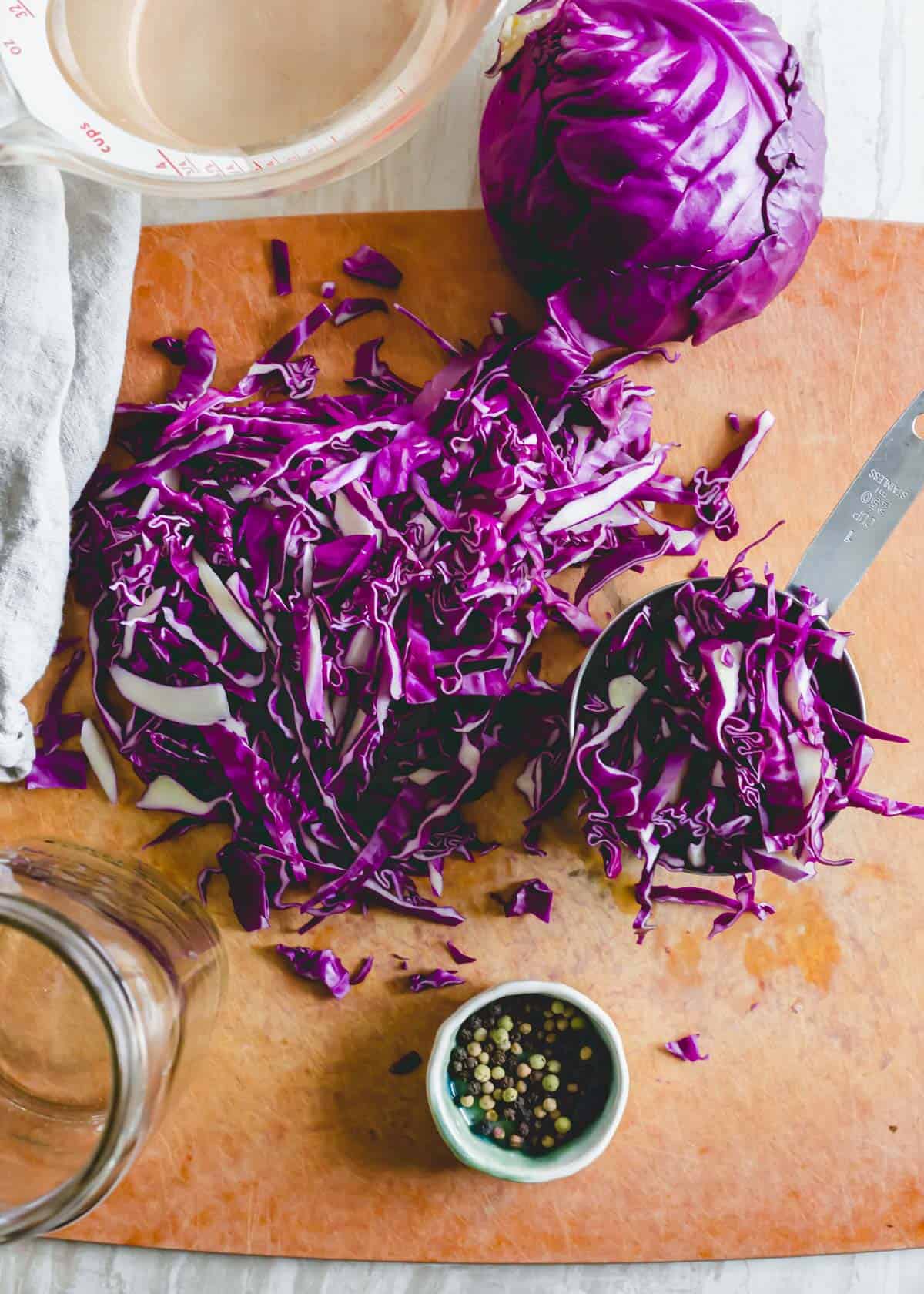Have you wondered, “Can you freeze cabbage?” after struggling to use up a whole head of the delicious cruciferous vegetable before it starts to wilt? You absolutely can freeze cabbage. Whether it’s napa, savoy, green or red, the steps are straightforward, and this guide will show you how to do it the right way.
If using a container with a lid, make sure the lid is air-tight and wrap the container in foil. Label and freeze for 3-5 months. To thaw, pull frozen cabbage out of the freezer and into the refrigerator to let it slow-thaw overnight. To reheat cooked cabbage, it’s best to reheat it in a cooking pan, over medium heat.

Benefits of freezing vegetables
Freezing fruits and vegetables is a valuable preservation method that offers several benefits.
Freezing preserves freshness, nutrition and natural flavors. Whether it’s freezing corn on the cob, avocados or zucchini, it’s an excellent way to enjoy fresh vegetables year-round.
Additionally, freezing minimizes food waste and is cost-effective, allowing bulk purchases during lower-priced seasons. It’s also a great option for large veggies like cabbage that produce more than enough for one recipe. With the proper techniques detailed in this guide, you don’t have eat cabbage until you’re sick of it just to use it up before it starts to go bad.
With this convenient approach, you can freeze it at it’s peak freshness and enjoy it later in recipes like a cabbage and sausage skillet or fried cabbage and bacon side dish.

How to freeze cabbage
Freezing cabbage preserves its freshness and nutritional value for an extended period. If done properly, frozen fresh cabbage will last for a few months and will undoubtedly come in handy in a pinch for future recipes.
Here’s the step-by-step guide on how to do it:
- Clean the cabbage: Start by thoroughly washing the cabbage under cool, running water. Remove any outer leaves that might be damaged or wilted.
- Chop, shred or separate leaves from the cabbage: Decide how you want to use the frozen cabbage later. Cabbage can be quartered, chopped, shredded or cut into bite sized pieces before freezing. This will vary depending on whether you’re making coleslaw, a pork and cabbage stir-fry recipe or something else. You can also choose to separate the cabbage leaves from each other and freeze them individually.
- Blanch the cabbage: Blanching is a crucial step to stop enzyme activity that can cause loss of color, flavor and nutrients during freezing. Bring a large pot of water to a boil and blanch the cabbage for one to two minutes, depending on the size of the pieces.
- Shock in ice water: Immediately transfer the blanched cabbage into a bowl of ice water to halt the cooking process. This process will help retain its crispness and color.
- Drain and dry: After shocking in the cold water, drain the cabbage thoroughly and pat it dry with paper or cloth towels to remove the excess moisture.
- Pack for freezing: Divide the cabbage into portions that you will likely use in one go. Use airtight freezer bags (we love Stasher bags for this purpose) or containers and remove as much air as possible before sealing.
- Label and date: Label the storage bags or containers with the date of freezing to help keep track of their freshness.
Stasher bags are my favorite refrigerator, freezer and pantry reusable storage bags. Theyre durable, dishwasher safe and reduce plastic use.
Does cooked cabbage freeze well?
FAQ
Can you freeze cabbage after cooking?
Does cabbage get soggy after freezing?
Can you freeze cooked cabbage and potatoes?
